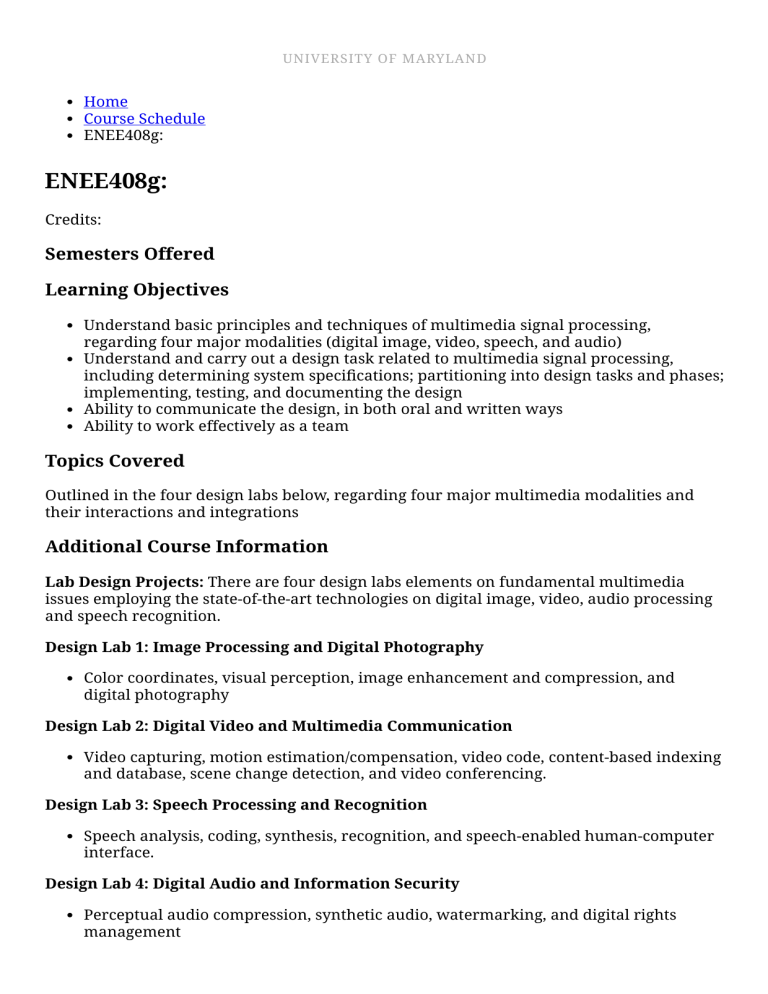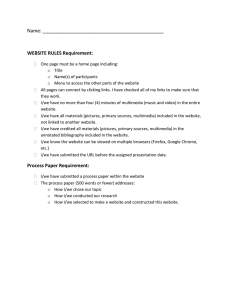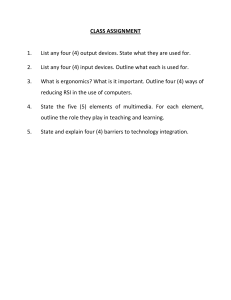
UNIVERSITY OF MARYLAND Home Course Schedule ENEE408g: ENEE408g: Credits: Semesters Offered Learning Objectives Understand basic principles and techniques of multimedia signal processing, regarding four major modalities (digital image, video, speech, and audio) Understand and carry out a design task related to multimedia signal processing, including determining system specifications; partitioning into design tasks and phases; implementing, testing, and documenting the design Ability to communicate the design, in both oral and written ways Ability to work effectively as a team Topics Covered Outlined in the four design labs below, regarding four major multimedia modalities and their interactions and integrations Additional Course Information Lab Design Projects: There are four design labs elements on fundamental multimedia issues employing the state-of-the-art technologies on digital image, video, audio processing and speech recognition. Design Lab 1: Image Processing and Digital Photography Color coordinates, visual perception, image enhancement and compression, and digital photography Design Lab 2: Digital Video and Multimedia Communication Video capturing, motion estimation/compensation, video code, content-based indexing and database, scene change detection, and video conferencing. Design Lab 3: Speech Processing and Recognition Speech analysis, coding, synthesis, recognition, and speech-enabled human-computer interface. Design Lab 4: Digital Audio and Information Security Perceptual audio compression, synthetic audio, watermarking, and digital rights management Final Design Project: This is a team-based project on designing and implementing multimedia signal processing systems. Each student team will emulate a high-tech company that will: Develop ideas of a multimedia product and decide on system specifications Partition and coordinate the design tasks within the team Implement, test, and document the design Demonstrate and market the product




